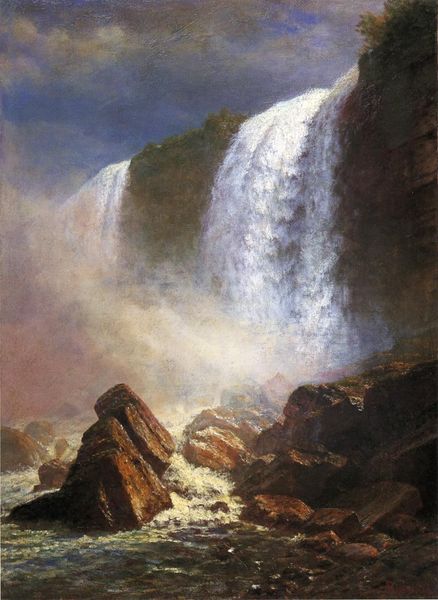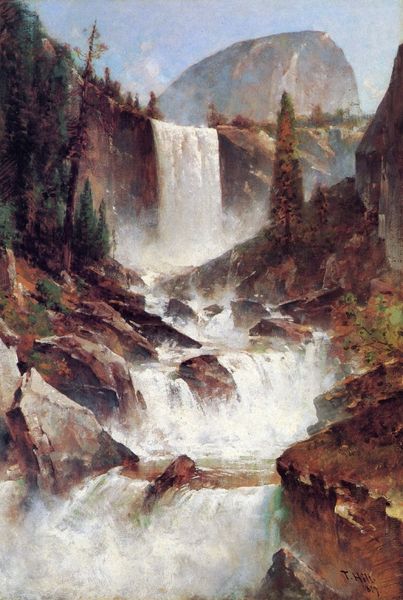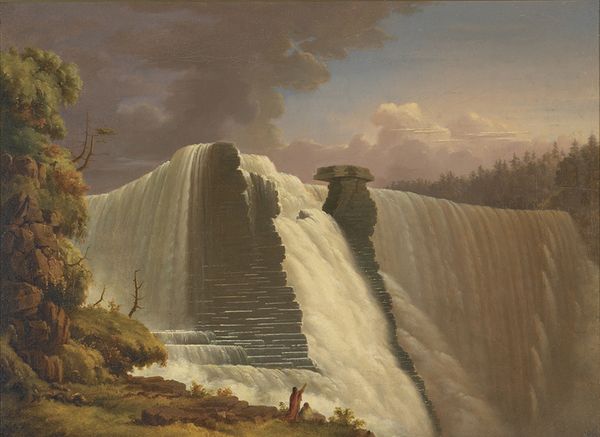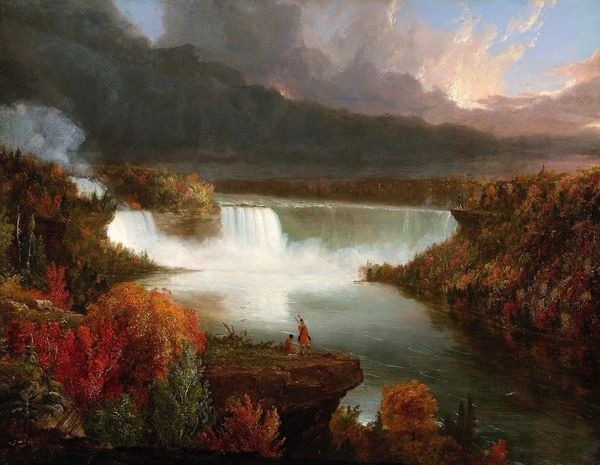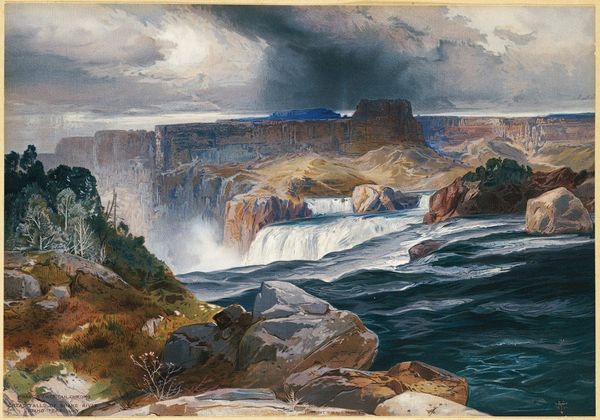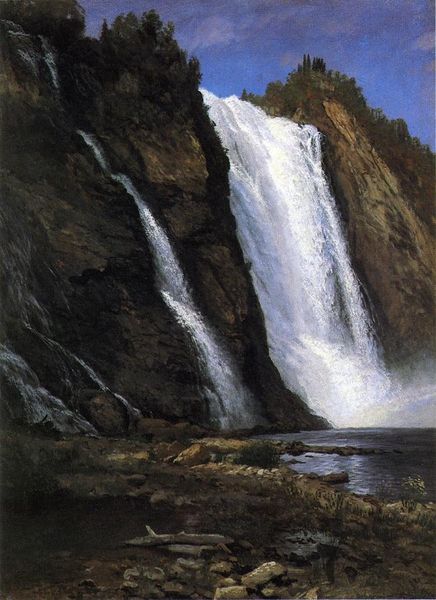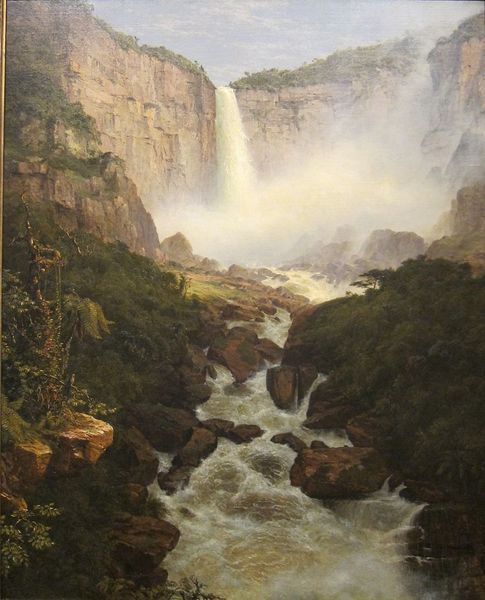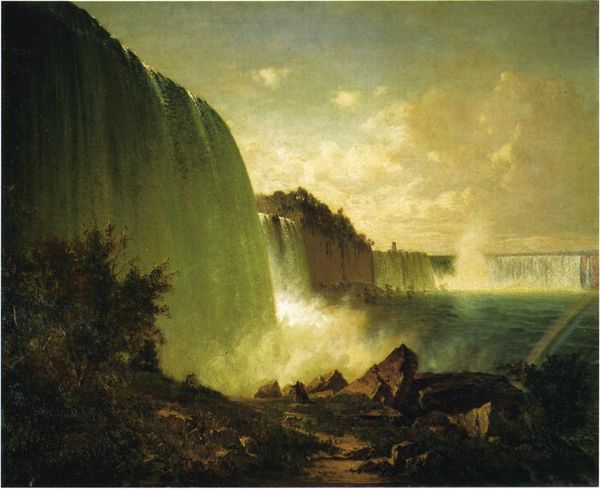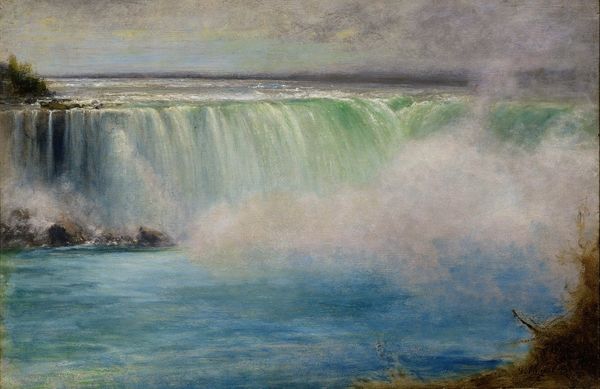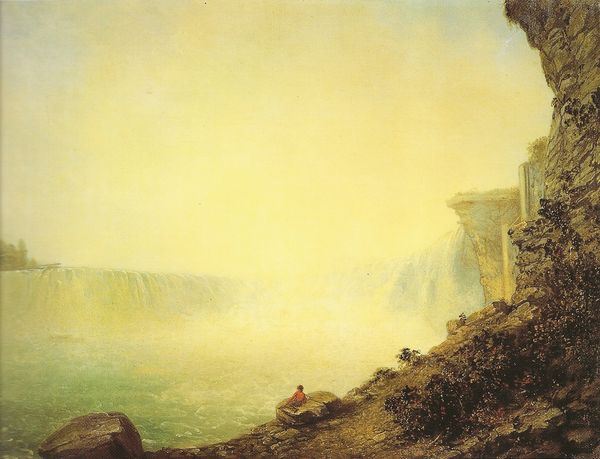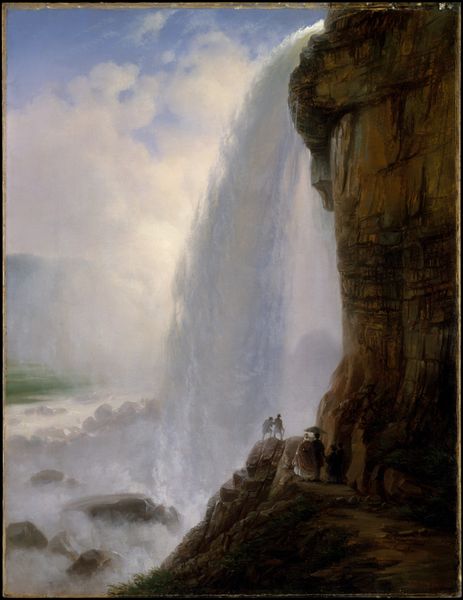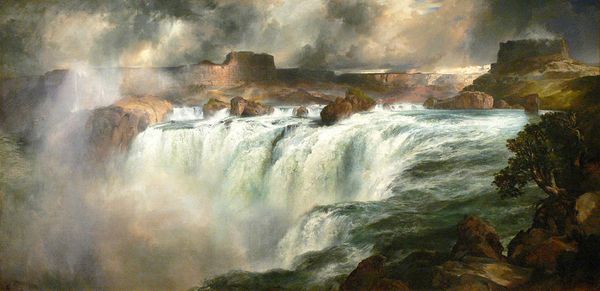
painting, plein-air, oil-paint
#
sky
#
painting
#
atmospheric-phenomenon
#
plein-air
#
oil-paint
#
landscape
#
waterfall
#
luminism
#
impressionist landscape
#
underpainting
#
hudson-river-school
#
nature heavy
#
men
#
water
#
cityscape
#
nature
Dimensions: 257.5 x 227.3 cm
Copyright: Public domain
Frederic Edwin Church captured Niagara Falls from the American side using oil on canvas. The sheer scale of the canvas, over two and a half meters wide, overwhelms the viewer. The careful layering of oil paint mimics the cascading water, and the mist that rises from the falls. The painting, though representational, is a demonstration of technical mastery. Think of the labor involved in creating a painting of this size. The mining and processing of pigments, the weaving and preparation of the canvas, and the sheer number of hours Church must have spent at his easel. This was a commodity produced for a market eager to consume images of the American landscape. By focusing on the making of the artwork, and its social context, we can understand its full meaning, challenging traditional distinctions between fine art and craft.
Comments
artera almost 2 years ago
⋮
Here is nature untamed, powerrul, and on a grand scale: spectacular scenery cascading through the canvas. American landscape painter Frederic Edwin Church (1826-1900) reveled in painting on a huge scale. Church's treatment of the rainbow, mist, and spume are all highly credible and his management of light and color shows great skill. It is a vivid record of pristine, virginal nature, and Church's worship of the wilderness strikes a chord with modern-day concerns about the environment. Emerging from the Hudson River School tradition of charting the great river and its tributaries, Church painted Niagara Falls on more than one occasion, each time from a different vantage point. His wanderlust also took him much further afield, to South America, following in the footsteps of the great Victorian explorer Baron von Humboldt from the Amazon to the Andes. He was influenced by Humbold's theories on how artists should relate to the physical world. Church's powerful and evocative landscapes were highly popular in Victorian times, with painter and poet Edward Lear calling the artist "the greatest landscape painter after Turner."
Join the conversation
Join millions of artists and users on Artera today and experience the ultimate creative platform.
